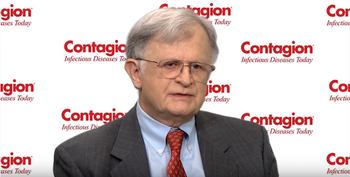
Robert Bransfield, MD, DLFAPA, explains the potential correlation between Lyme and associated diseases and suicidality.

Robert Bransfield, MD, DLFAPA, explains the potential correlation between Lyme and associated diseases and suicidality.

William Schaffner, MD, explains how health care providers can work towards getting patients who are aged 65 and older to receive a flu shot.

Daniel Diekema, MD, explains why the microbiology laboratory should be a part of antimicrobial stewardship programs.

James S. Lewis, PharmD, FIDSA, explains why addressing issues surrounding antibiotic use in veterinary medicine is crucial in the fight against antibiotic resistance.
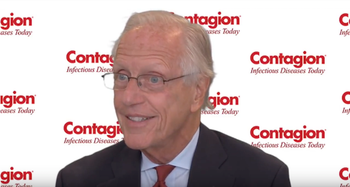
William Schaffner, MD, discusses NFID and Sanofi Pasteur’s Flu Alert campaign, dedicated to emphasizing the importance of vaccination in adults aged 65 and older.
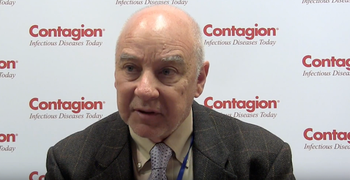
David A. Schwartz, MD, MS Hyg, FCAP, notes a topic of interest at the First International Zika Conference.

Alan Gross, PharmD, discusses testing options for multidrug-resistant pneumonia.
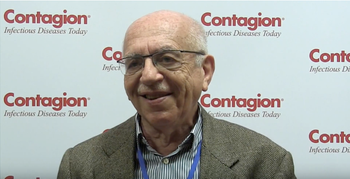
Silvio Pitlik, MD, explains why he feels Lyme disease can make individuals obsessive.

Silvia Munoz-Price, MD, PhD, calls for a clear delineation of the role of hospital epidemiologists.

Robert Bransfield, MD, DLFAPA, explains why patients with chronic infections may be at increased risk for suicide.

William Schaffner, MD, explains why adults aged 65 and older need to receive the flu shot.

Alan Gross, PharmD, postulates why one in four patients experienced treatment failure for community-acquired pneumonia in a recent study.

Viviane Boaventura, MD, MsC, PhD, discusses which arbovirus poses the greatest threat to Brazil.

Prof. Francisco Veas, PhD, discusses the launch of a task force dedicated to gaining a better understanding of Lyme disease.

Silvia Munoz-Price, MD, PhD, calls for more microbiome research in order to ultimately improve patient care in hospitals.

James S. Lewis, PharmD, FIDSA, shares different proposals shared in the health care community to incentivize pharmaceutical companies to develop needed drugs.
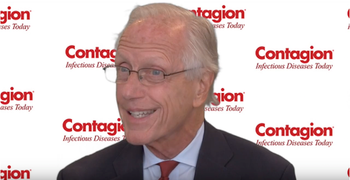
William Schaffner, MD, discusses how the adults aged 65 and older are disproportionately affected by influenza.

Brinda Emu, MD, offers insight into the HIV monoclonal antibody ibalizumab.

Michael N. Dudley, PharmD, explains how VABOMERE was associated with a higher overall cure rate and lower mortality compared with the best available therapy in patients with CRE infections in a recent trial.
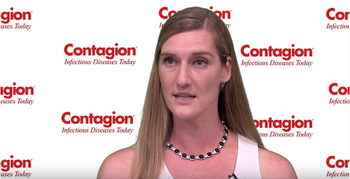
Monica Mahoney, PharmD, BCPS-AQ ID, explains the first-line empiric therapy for candidemia.
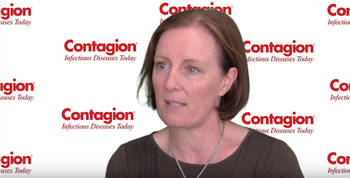
Ciara Kennedy, PhD, breaks down APX001, a new antifungal with a unique mechanism of action.

Magda Opsomer, MD, reveals who will benefit from the darunavir single-tablet HIV regimen.

Jessica Justman, MD, shares how the PHIA project is collecting HIV biomarkers in children.
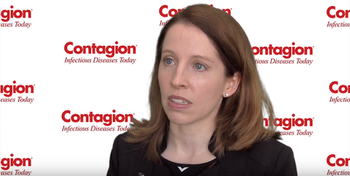
Amanda Paschke, MD, MSCE, explains the advantage of administering a beta-lactam in combination with a beta-lactamase inhibitor.

Evelyn J. Ellis-Grosse, PhD, chief scientific officer of Zavante Therapeutics, explains why Zavante Therapeutic’s fosfomycin is a unique, novel antimicrobial.

Christopher McCoy, PharmD, shares the protocol for approaching patients who may have a beta-lactam allergy.

Sue Cammarata, MD, explains the advantages that delafloxcin has over other fluoroquinolones.

Neil Fishman, MD, explains what the standardized antimicrobial administration ratio is.

Emily Heil, PharmD, BCPS-AQ ID, sheds light on one of the standards of new antibiotic stewardship regulations: all antibiotic orders should include indication for use.
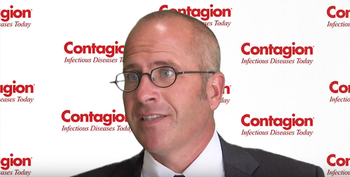
David Andes, MD, shares the half-life and dosing intervals for a new long-acting echinocandin.